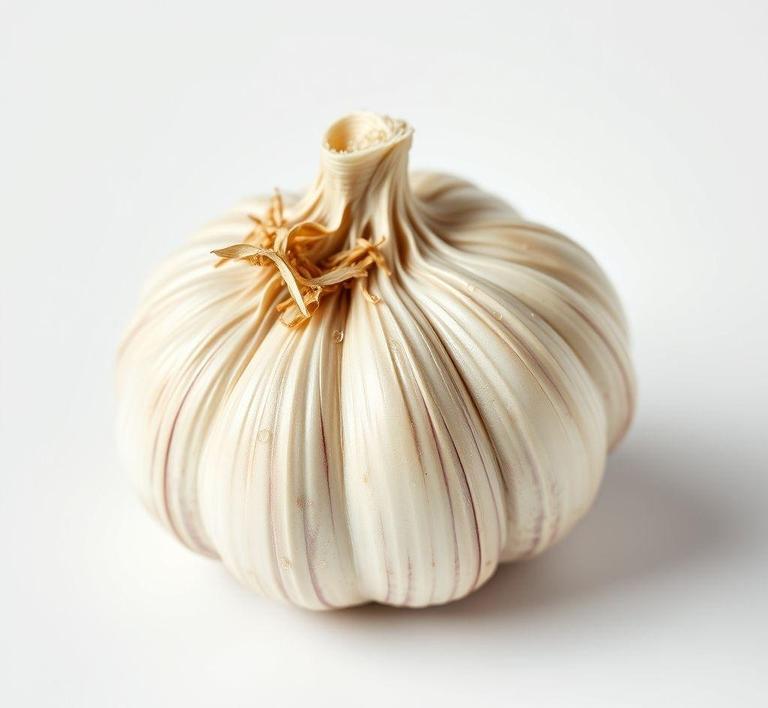If you’ve ever wondered whether it’s okay to refreeze garlic, you’re not alone! Many of us love having garlic on hand, whether it’s fresh or pre-chopped, but sometimes we end up with more than we can use at once. So, what’s the deal with refreezing garlic? Can it maintain its flavor and texture? In this guide, we’ll dive into how to properly store and refreeze garlic, explore the potential benefits, and talk about the best ways to keep that wonderful garlic flavor intact, even after freezing and thawing. It’s easier than you think!
Can You Refreeze Garlic?

Garlic, the aromatic cornerstone of countless global cuisines, is not only prized for its pungent bite but also for its medicinal properties. Whether you’ve minced a little too much for tonight’s pasta or defrosted more roasted garlic than needed, a common question arises: Can garlic be refrozen?
The short answer is yes-you can refreeze garlic. However, whether you should is a different matter. Refreezing garlic, like many foods, comes with certain caveats that affect both its safety and its quality. From a food safety standpoint, if the garlic has been thawed in the refrigerator and hasn’t been sitting at room temperature for more than two hours, it’s safe to refreeze. But keep in mind: garlic is particularly sensitive to moisture and temperature changes. Each thawing and freezing cycle degrades its texture and flavor, which may alter the overall culinary experience.
How To Refreeze Garlic?
Refreezing garlic successfully hinges on how it was originally prepared and stored. Below are tailored methods for the most common garlic preparations:
-
Raw Garlic (Whole Cloves or Minced):
- Step 1: If you’ve thawed raw garlic cloves, inspect them for any signs of spoilage (mold, sliminess, or off smells).
- Step 2: Dry the garlic as much as possible using paper towels. Moisture is the enemy of both texture and freezer longevity.
- Step 3: Place the cloves or minced garlic into a freezer-safe, airtight container or resealable bag. For convenience, portion them into small amounts (e.g., teaspoon-sized mounds) and freeze on a baking sheet before transferring to a container-this allows easy use later.
- Step 4: Label the container with the date and use within 1 to 2 months for the best flavor retention.
-
Cooked Garlic (e.g., Roasted or Sautéed):
- Step 1: Let the garlic cool completely at room temperature-no longer than two hours-to avoid bacterial growth.
- Step 2: Transfer to an airtight container or wrap tightly in plastic wrap followed by foil.
- Step 3: Label and refreeze. Roasted garlic, in particular, handles refreezing better than raw because cooking alters its structure, reducing the impact of freezing on texture.
Pro Tip: For minced garlic in oil, never refreeze unless it has been handled with extreme care and kept refrigerated at all times. This combination poses a rare but serious risk of botulism if left at unsafe temperatures.
Quality Impact
This is where the discussion becomes more nuanced. While safety is relatively straightforward, quality is where refreezing garlic takes a hit.
Texture: Garlic’s delicate cell structure doesn’t fare well under freezing, let alone a second round. Upon the first freeze, ice crystals rupture cell walls, causing the garlic to become mushy or watery when thawed. Refreezing exaggerates this effect, leaving you with a product that lacks the crispness and snap of fresh garlic.
Flavor: Fresh garlic has a sharp, vibrant punch. That aromatic compound, allicin, which gives garlic its signature bite, starts to deteriorate after the first freeze. Refreezing can further diminish these volatile oils, resulting in a duller, less aromatic profile.
Appearance: Expect discoloration-refrozen garlic may darken or develop slight brown patches, especially if exposed to air or improperly sealed.
That said, for applications like soups, stews, or slow-cooked dishes, where garlic’s texture becomes secondary and its flavor mellows anyway, refrozen garlic may still serve admirably.
So, can you refreeze garlic? Technically, yes. Should you? Only when necessary, and preferably with cooked or previously frozen garlic that has been thawed safely in the refrigerator.
Refreezing garlic is a practical choice when reducing waste or extending shelf life, but it’s important to manage expectations. While it may no longer shine in raw applications like garlic bread or bruschetta, it can still lend character and depth to heartier dishes.
When possible, freeze garlic in meal-sized portions the first time around to avoid the need to refreeze. And if you’re truly looking to preserve both potency and texture, consider alternative storage methods like dehydrating, fermenting, or storing minced garlic in vinegar or wine under refrigeration.
In essence, garlic, the humble flavor powerhouse, deserves thoughtful handling-even in the freezer. A little care in how you refreeze it can go a long way in preserving its magic.
Is It Safe To Refreeze Garlic?
Garlic, beloved for its aromatic punch and versatility, is a staple in most kitchens. But when it comes to freezing and refreezing garlic, caution is warranted. The short answer is: yes, it is technically safe to refreeze garlic, but with important caveats.
Freezing garlic-whether whole, chopped, or pureed-is a common method to extend its shelf life. However, each freeze-thaw cycle degrades the quality of the garlic. Upon refreezing, the texture becomes increasingly mushy, the flavor dulls, and the enzymatic activity that gives garlic its characteristic bite is diminished. More crucially, improper handling during thawing (such as letting garlic sit at room temperature for too long) can create the perfect conditions for bacterial growth, particularly the dangerous Clostridium botulinum, which thrives in low-oxygen environments like those found in oil-infused garlic stored improperly.
Thus, the safety of refreezing garlic largely hinges on how it was handled during its thawed state. If the garlic was kept cold (below 40°F / 4°C) and was not out for more than 1-2 hours, it’s generally safe to refreeze. But if there’s any doubt about its storage during that window, it’s better to err on the side of caution and discard it.
Signs That Garlic Should Not Be Refrozen
Recognizing when garlic has deteriorated or potentially become unsafe to refreeze is critical. Here are some telltale signs:
-
Unpleasant Odor:
Fresh garlic emits a sharp, sulfurous scent. If the thawed garlic smells sour, musty, or rancid, it’s a red flag. This may indicate the beginning of spoilage or bacterial activity.
-
Discoloration:
Healthy garlic should be a pale off-white or creamy color. If you notice patches of yellowing, browning, or greenish-blue hues, this could point to mold growth or oxidation and signals that the garlic is no longer viable for consumption.
-
Slimy or Spongy Texture:
Refrozen garlic becomes softer over time, but if the texture is unusually slimy or it breaks apart into mush with a wet residue, that’s a sign of microbial spoilage.
-
Mold Presence:
Visible mold-whether fuzzy white or darker in appearance-is a clear indicator that the garlic has gone bad and should not be consumed, let alone refrozen.
-
Off Taste:
If you’ve defrosted and sampled a small bit of garlic and it tastes metallic, bitter, or otherwise "off," it’s best to discard it. Flavor degradation often precedes or accompanies spoilage.
Common Refreezing Mistakes
Even with the best intentions, many people unknowingly make mistakes when refreezing garlic. Let’s unpack the most common errors:
-
Refreezing After Long Thawing at Room Temperature:
Leaving garlic out on the counter for hours before deciding to refreeze is a major food safety risk. Bacteria can multiply rapidly at room temperature, and freezing won’t kill these pathogens-it only halts their growth temporarily.
-
Refreezing Garlic Stored in Oil Improperly:
Garlic stored in oil should never be left at room temperature or refrozen unless it was properly acidified or refrigerated continuously. This combination, when mishandled, can lead to botulism-a rare but potentially fatal illness.
-
Using Dirty or Non-Airtight Containers:
Improper storage can introduce contaminants and expose garlic to freezer burn. Always use clean, airtight containers or freezer-safe bags to maintain hygiene and quality.
-
Repeated Freeze-Thaw Cycles:
Constantly thawing and refreezing garlic multiple times not only destroys texture and flavor but also opens the door to spoilage. If you anticipate needing smaller amounts, portion the garlic before the initial freeze.
-
Refreezing After Cooking:
If you’ve cooked with previously frozen garlic and then attempt to freeze the leftovers again, be aware that the garlic’s flavor may become muddied and dull. It’s better to use freshly prepped garlic for best results in cooked dishes.
Tips And Tricks
Here are some expert-approved strategies for freezing garlic the right way-and avoiding the need to refreeze altogether:
-
Pre-Portion Garlic:
Chop or puree garlic and freeze it in small portions-ice cube trays work beautifully. Once frozen, pop the cubes out and store them in a labeled freezer bag. This way, you only thaw what you need.
-
Use Oil (Safely):
For convenience, garlic can be blended with oil and frozen in cubes. Ensure the mixture is frozen immediately after preparation, and keep frozen until use. Never store garlic-in-oil mixtures at room temperature.
-
Flash Freeze Whole Cloves:
Peel whole garlic cloves, spread them out on a tray, and freeze them individually. Once frozen, transfer to an airtight container. This prevents them from clumping and allows you to grab a few cloves at a time.
-
Label Everything:
Always label your containers or bags with the freezing date. Garlic is best used within 3-6 months for optimal flavor and texture. Beyond that, it’s still safe if stored properly, but the quality will decline.
-
Vacuum Seal for Longevity:
If you have a vacuum sealer, use it to freeze garlic. It minimizes exposure to air and moisture, helping preserve both safety and taste.
Conclusion
Garlic may be small, but it punches well above its weight in flavor-and deserves proper care when it comes to freezing. While it is safe to refreeze garlic under the right conditions, doing so can compromise its quality and, in rare cases, its safety. Understanding the signs of spoilage, avoiding common refreezing missteps, and adopting smart storage techniques can help you make the most of your garlic while keeping your meals delicious and safe.
So, whether you’re batch-cooking or simply trying to stretch your pantry staples, treat your garlic with the respect it deserves. Because in the culinary world, few ingredients can match the magic of a well-handled clove.


